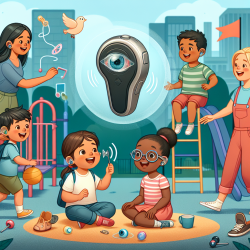As practitioners in the field of speech-language pathology, our primary goal is to enhance communication outcomes for children. The recent systematic review titled "A Systematic Review of the Effectiveness of Hearing Technologies on Speech Perception Outcomes for People with a Severe-to-Profound High-Frequency Hearing Loss" provides valuable insights into the effectiveness of various hearing technologies. This blog aims to translate these findings into actionable steps for practitioners working with children who have severe-to-profound high-frequency hearing loss (HFHL).
Understanding the Review Findings
The review analyzed 74 studies to compare the effectiveness of different hearing technologies, including:
- Frequency-lowering hearing aids (HAs)
- Conventional cochlear implants (CIs)
- Electric acoustic stimulation (EAS) implants
The findings indicate that while EAS implants show a tendency to be the most effective in improving speech perception, frequency-lowering HAs also provide significant benefits to some individuals. However, the quality of the evidence was rated as low or very low due to study limitations, inconsistency, and imprecision.
Implementing the Findings in Clinical Practice
Given the variability in outcomes and the low quality of evidence, it is crucial for practitioners to adopt a data-driven and individualized approach when selecting hearing technologies for children with HFHL. Here are some recommendations based on the review:
1. Trial Frequency-Lowering HAs Before Cochlear Implantation
Due to the potential risks and high costs associated with cochlear implants, it is advisable to trial frequency-lowering HAs on an individual basis before considering implantation. This step can help determine if a child could benefit from frequency-lowering HAs to a greater extent than conventional HAs.
2. Consider the Individual Variability
The review highlighted significant variability in the effectiveness of hearing technologies across individuals. Factors such as hearing level, duration of deafness, and prior experience with HAs can influence outcomes. Practitioners should carefully evaluate these factors when making clinical decisions.
3. Use a Comprehensive Assessment Approach
Speech perception is multidimensional and not solely related to speech recognition in quiet or noisy environments. Consider other outcomes such as day-to-day hearing disabilities, social participation, and quality of life when assessing the effectiveness of hearing technologies.
4. Advocate for Higher Quality Research
The review calls for more high-quality research to better understand the benefits of EAS implants and frequency-lowering HAs. Practitioners can contribute to this effort by participating in or advocating for well-designed studies that control for biases and include larger sample sizes.
Conclusion
While the EAS implant shows promise as a leading technology for improving speech perception in children with HFHL, frequency-lowering HAs also offer valuable benefits. Practitioners should adopt a cautious and individualized approach, considering trials with frequency-lowering HAs before proceeding to cochlear implantation. More high-quality research is needed to provide clearer clinical indications and better guide clinical decisions.
To read the original research paper, please follow this link: A Systematic Review of the Effectiveness of Hearing Technologies on Speech Perception Outcomes for People with a Severe-to-Profound High-Frequency Hearing Loss.










